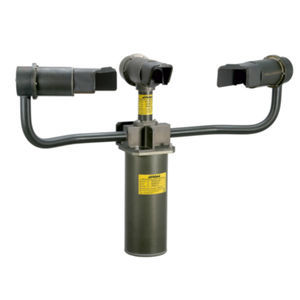
- Products
- Catalogs
- News & Trends
- Exhibitions
Meteorology visibility sensor SWS-200

Add to favorites
Compare this product
Characteristics
- Other characteristics
- meteorology
Description
The SWS-200 is designed for use in applications where accurate and reliable visibility measurements are required with the addition of WMO 4680 present weather codes
Applications: Aviation Meteorology, Runway Visual Range RVR, Aviation Meteorology and METAR, Visibility Controlled Wind Turbine Obstruction Lights, General Meteorology
The SWS-200 is designed for use in applications where accurate and reliable visibility measurements are required with the addition of WMO 4680 present weather codes.
The sensor measures Meteorological Optical Range (MOR) as well as reporting the presence of liquid and frozen precipitation. Precipitation is reported using WMO table 4680 codes for easy integration with aviation systems. A feature of Biral sensors is the ability to report precipitation intensity according to a range of national standards. The unique backscatter receiver gives the SWS-200 unparalleled abilities in distinguishing frozen from liquid precipitation, a key factor when determining the safety of aircraft operations. Whilst the 10m to 99.99km visibility range makes the sensor suitable of use in meteorological observation networks and research applications.
Analogue voltage and current outputs, complimented by relays that can switch on visibility and/or precipitation, make the sensor suitable for connection to local warning indicators and legacy systems.
An optional interface to the ALS-2 Ambient Light Sensor makes the SWS-200 particularly suited for use in aviation applications where Runway Visual Range (RVR) information is required in addition to METAR data.
Catalogs
No catalogs are available for this product.
See all of Biral‘s catalogsRelated Searches
*Prices are pre-tax. They exclude delivery charges and customs duties and do not include additional charges for installation or activation options. Prices are indicative only and may vary by country, with changes to the cost of raw materials and exchange rates.





